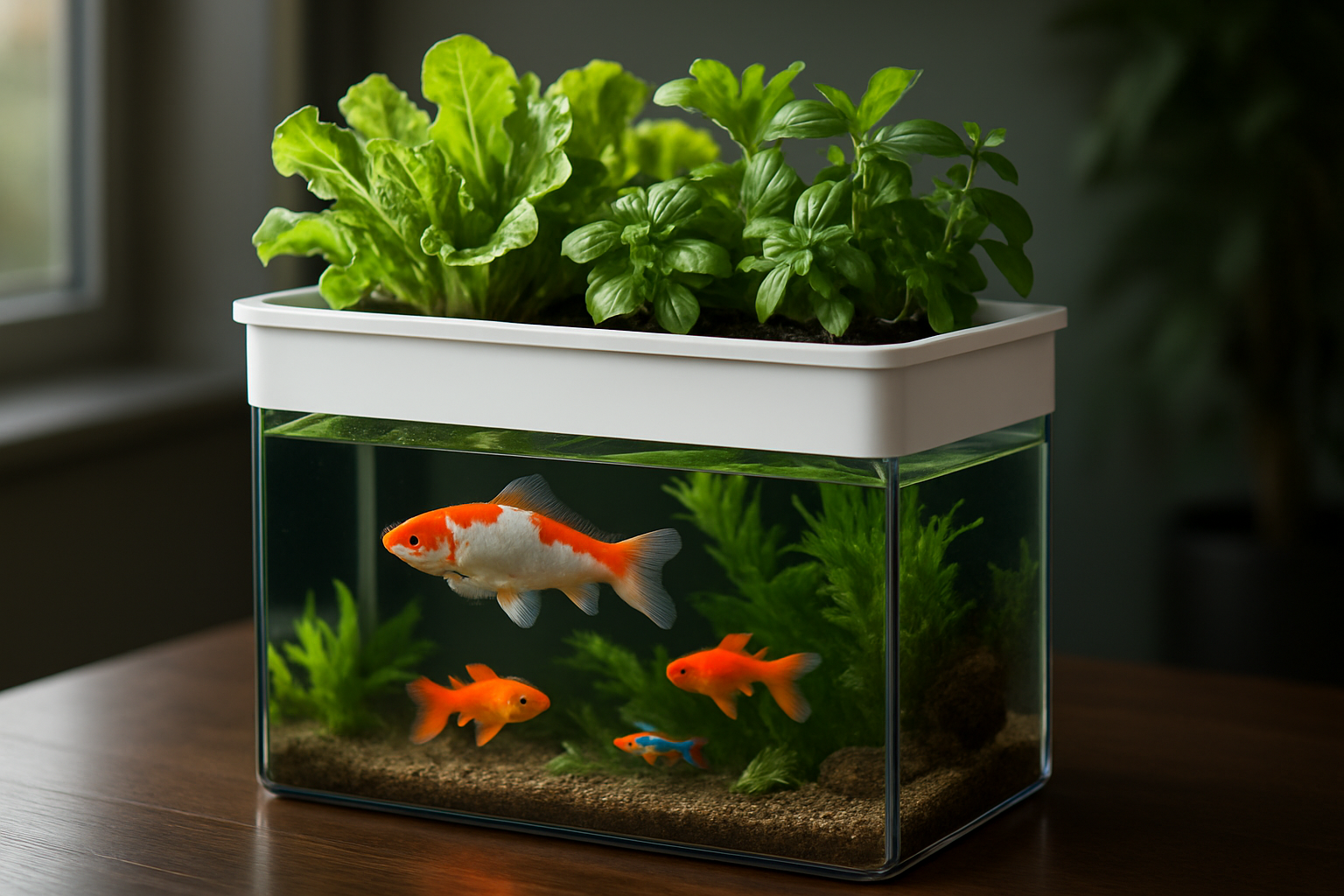Aquaponic Pet Habitats: The Future of Sustainable Fish Keeping
Imagine a vibrant ecosystem where your favorite aquarium fish thrive alongside lush, living plants, creating a self-sustaining miniature world in your home. This is the essence of aquaponic pet habitats, an innovative approach to fish keeping that's revolutionizing the way we think about aquariums and sustainable pet care.

The Science Behind Aquaponic Pet Habitats
Aquaponic systems rely on the nitrogen cycle to function effectively. Fish produce ammonia as waste, which is converted into nitrites and then nitrates by beneficial bacteria. These nitrates serve as nutrients for the plants, which absorb them through their roots. As the plants consume these nutrients, they effectively filter the water, returning clean, oxygenated water to the fish.
This natural filtration process reduces the need for frequent water changes and chemical treatments, making aquaponic habitats more sustainable and less labor-intensive than traditional aquariums. The balance between fish, plants, and bacteria creates a harmonious ecosystem that closely mimics natural aquatic environments.
Choosing the Right Fish for Your Aquaponic Habitat
Not all fish species are suitable for aquaponic systems. Ideal candidates are hardy, adaptable species that can tolerate fluctuations in water parameters. Some popular choices include:
-
Tilapia: Known for their resilience and rapid growth, tilapia are excellent for larger aquaponic setups.
-
Goldfish: These classic aquarium fish are well-suited to smaller systems and cooler temperatures.
-
Guppies: Colorful and prolific, guppies add vibrancy to aquaponic habitats while helping to control algae.
-
Koi: For outdoor systems, koi can thrive in aquaponic ponds, adding a touch of Japanese-inspired elegance.
When selecting fish, consider factors such as tank size, water temperature requirements, and compatibility with other species to ensure a thriving aquaponic community.
Plant Selection for Aquaponic Success
The plant component of an aquaponic system is crucial for both aesthetics and functionality. Ideal plants should have robust root systems to absorb nutrients efficiently. Some popular choices include:
-
Leafy greens: Lettuce, spinach, and kale grow quickly and thrive in aquaponic conditions.
-
Herbs: Basil, mint, and cilantro not only look great but also provide fresh herbs for cooking.
-
Ornamental plants: Peace lilies, spider plants, and pothos add visual interest while effectively filtering the water.
Experimenting with different plant species can lead to stunning aquascapes that double as functional gardens, allowing pet owners to harvest fresh produce alongside their aquatic companions.
Designing Your Aquaponic Pet Habitat
Creating an aquaponic habitat requires careful planning and design. Key components include:
-
Fish tank: The heart of the system, housing your aquatic pets.
-
Grow bed: Where plants are cultivated, typically filled with a growing medium like expanded clay pebbles.
-
Pump: Circulates water from the fish tank to the grow bed.
-
Siphon: Returns filtered water from the grow bed to the fish tank.
-
Lighting: Essential for plant growth and creating an appealing display.
When designing your system, consider factors such as space constraints, aesthetic preferences, and the specific needs of your chosen fish and plant species. Custom-built systems can range from sleek, modern designs to more naturalistic setups that mimic wild habitats.
Maintenance and Care of Aquaponic Habitats
While aquaponic systems are generally low-maintenance compared to traditional aquariums, they still require regular care to thrive. Essential tasks include:
-
Monitoring water quality: Regular testing for pH, ammonia, nitrites, and nitrates is crucial.
-
Feeding fish appropriately: Overfeeding can lead to water quality issues.
-
Pruning and harvesting plants: Keeps the system balanced and productive.
-
Cleaning filters and pipes: Prevents clogs and maintains efficient water flow.
-
Pest management: Using natural methods to control insects and plant diseases.
With proper care, an aquaponic pet habitat can provide years of enjoyment, offering a fascinating glimpse into the intricate relationships between aquatic life, plants, and beneficial microorganisms.
The Future of Aquaponic Pet Keeping
As awareness of environmental issues grows, aquaponic pet habitats are poised to become increasingly popular. These systems offer a sustainable alternative to traditional fish keeping, reducing water waste and chemical use while providing an engaging and educational experience for pet owners.
Innovations in technology are making aquaponic systems more accessible and efficient. Smart monitoring systems can now track water parameters in real-time, alerting owners to potential issues before they become problematic. LED lighting optimized for plant growth allows for more compact and energy-efficient setups.
The market for aquaponic pet habitats is expanding, with prices ranging from around $200 for small, beginner-friendly kits to several thousand dollars for large, custom-designed systems. This growing interest is driving research into new fish and plant combinations, as well as more efficient system designs.
As we look to the future, aquaponic pet habitats represent a harmonious blend of technology, nature, and pet care. They offer a glimpse into a more sustainable approach to aquarium keeping, where the lines between pet habitat, home decor, and personal garden blur into a single, thriving ecosystem. For those seeking a unique and eco-friendly pet experience, aquaponic habitats provide a fascinating window into the intricate balance of aquatic life and the potential for sustainable, small-scale food production.





